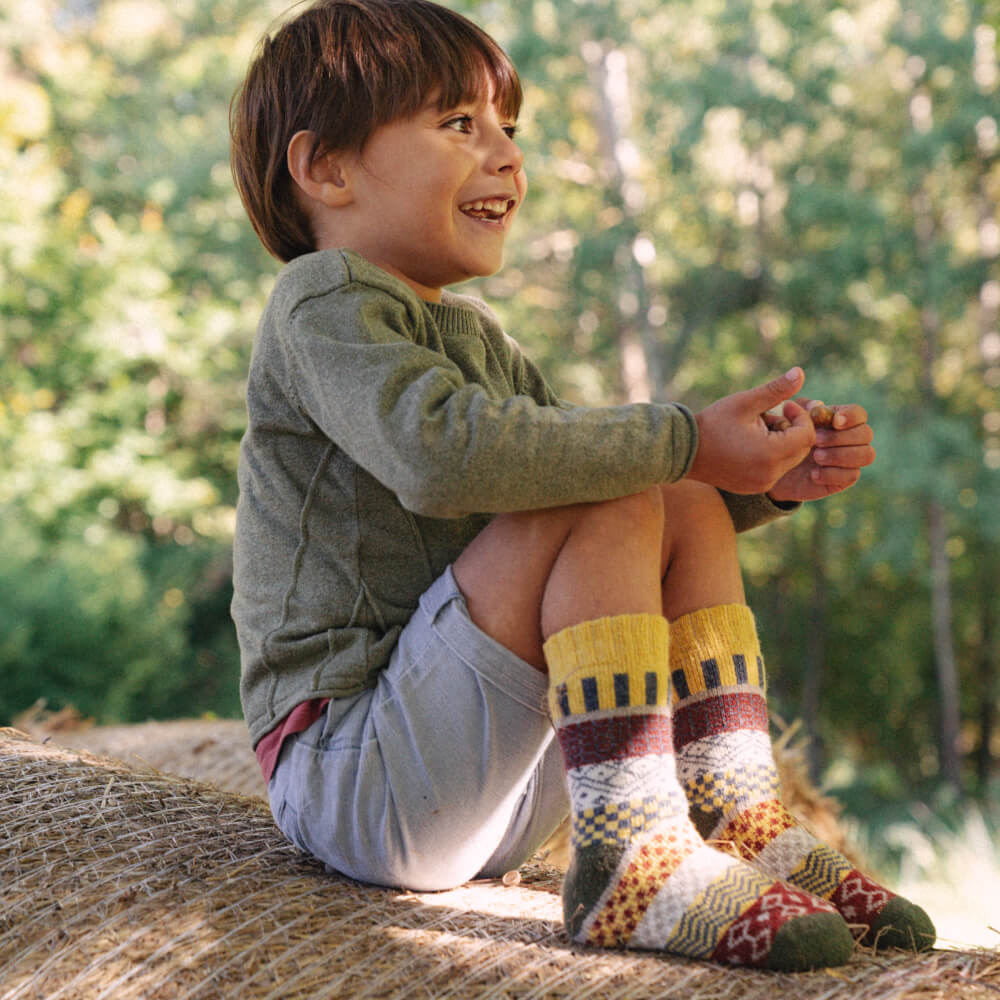Caring for kid wool socks properly can significantly extend their lifespan and maintain their quality. Wool socks provide unmatched warmth, comfort, and durability, making them a popular choice for children. However, without the right care, even the best wool socks can wear out quickly. This article will guide you through various methods to ensure your kid's wool socks last as long as possible, retaining their softness and functionality. By following these guidelines, you can maximize your investment in wool socks and keep your child's feet cozy and protected.
Understanding Wool Socks
Wool socks are crafted from natural fibers that offer excellent insulation, moisture-wicking properties, and breathability. Unlike synthetic materials, wool can regulate temperature, keeping feet warm in cold weather and cool in warmer conditions. This makes them ideal for active children who need reliable footwear throughout the year. Understanding the unique properties of wool is essential for proper care. Wool fibers are delicate and can be easily damaged by improper washing, drying, or storage methods. Recognizing these characteristics will help you adopt the right practices to maintain the integrity of the socks.

Pre-Wear Care
Before your child even wears their wool socks, there are a few steps you can take to ensure they last longer. First, inspect the socks for any defects or loose threads that could lead to further damage. Ensuring the right fit is also crucial; socks that are too tight can strain the fibers, while overly loose socks can cause excessive friction and wear. Teach your child to put on and remove their socks gently to avoid stretching or tearing. Starting with a good foundation can make a significant difference in the longevity of wool socks.
Washing Wool Socks
One of the most critical aspects of caring for wool socks is washing them properly. Wool should not be washed too frequently as this can weaken the fibers. When washing is necessary, hand washing is preferable to machine washing. Use a mild detergent specifically designed for delicate fabrics and avoid fabric softeners, which can leave residues. If you must use a washing machine, choose a gentle cycle with cold water. Hot water can cause wool to shrink and lose its shape. Proper washing techniques are vital to preserving the quality of wool socks.
Drying Wool Socks
After washing, drying wool socks correctly is just as important. Avoid wringing out the socks, as this can stretch and distort the fibers. Instead, gently press out excess water with a towel. Air drying is the best method for wool socks. Lay them flat on a clean, dry surface away from direct sunlight and heat sources, which can cause shrinking and damage. Avoid using a tumble dryer, as the high heat can be detrimental to wool. Patience in the drying process will ensure that the socks retain their shape and durability.
Storage of Wool Socks
Proper storage can protect wool socks from damage and extend their lifespan. Store the socks in a cool, dry place to prevent moisture buildup and the risk of mold or mildew. Using a dedicated drawer or container can keep them organized and free from tangling with other clothes. Moths and other pests are attracted to wool, so consider using natural repellents like cedar chips or lavender sachets in your storage area. Proper folding, rather than rolling, can prevent unnecessary stretching of the fibers. By paying attention to storage conditions, you can keep your wool socks in optimal condition.
Regular Maintenance and Repair
Regularly inspecting your child's wool socks for signs of wear and tear is essential for early intervention. Look for thinning areas, holes, or loose threads. Simple repairs, such as darning small holes, can prevent further damage and prolong the life of the socks. Teaching your child to treat their socks gently can also reduce the frequency of repairs. When socks become too worn to repair, it’s time to replace them. Keeping a maintenance routine ensures that minor issues are addressed promptly, preventing them from becoming major problems.
Special Tips for Longevity
To further extend the life of wool socks, consider rotating their use to avoid excessive wear on any single pair. Using sock liners can also protect the wool fibers from friction and sweat, reducing the need for frequent washing. Adjust your care routine seasonally, as wool socks may require different handling in varying climates. For instance, during humid months, ensure proper ventilation to prevent mold growth. Paying attention to these details and making small adjustments can make a big difference in maintaining the quality and durability of wool socks.

Conclusion
Caring for kid wool socks involves a combination of proper washing, drying, storage, and regular maintenance. By understanding the unique properties of wool and adopting best practices, you can significantly extend the lifespan of these socks, ensuring they provide warmth and comfort for your child over many seasons. From pre-wear care to special tips for longevity, each step plays a crucial role in preserving the quality of wool socks. Investing time and effort into their care not only saves money but also supports sustainable practices by reducing waste. Ultimately, with mindful care, wool socks can remain a reliable and cherished part of your child's wardrobe for a long time.
FAQs
How often should I wash my child's wool socks?
Wool socks should be washed only when necessary, typically after several wears, unless they are visibly soiled or have absorbed a lot of sweat. Over-washing can weaken the fibers and shorten the lifespan of the socks.
Can I machine wash wool socks?
While hand washing is preferred, wool socks can be machine washed on a gentle cycle with cold water. Use a mild detergent suitable for wool and avoid fabric softeners. Place the socks in a mesh laundry bag to protect them during the wash cycle.
What should I do if my child's wool socks shrink?
If wool socks shrink, try gently stretching them back to their original size while they are still damp. Avoid using hot water or high heat in the dryer in the future, as these can cause further shrinkage.
How can I prevent moths from damaging wool socks?
Store wool socks in a cool, dry place and use natural moth repellents such as cedar chips or lavender sachets. Regularly inspect the storage area and the socks themselves for signs of moth activity and clean the storage space frequently.
Are there any special products I should use for washing wool socks?
Use a mild detergent specifically designed for wool or delicate fabrics. Avoid bleach, fabric softeners, and harsh chemicals, as these can damage the wool fibers. A gentle, wool-safe detergent will help maintain the softness and durability of the socks.






